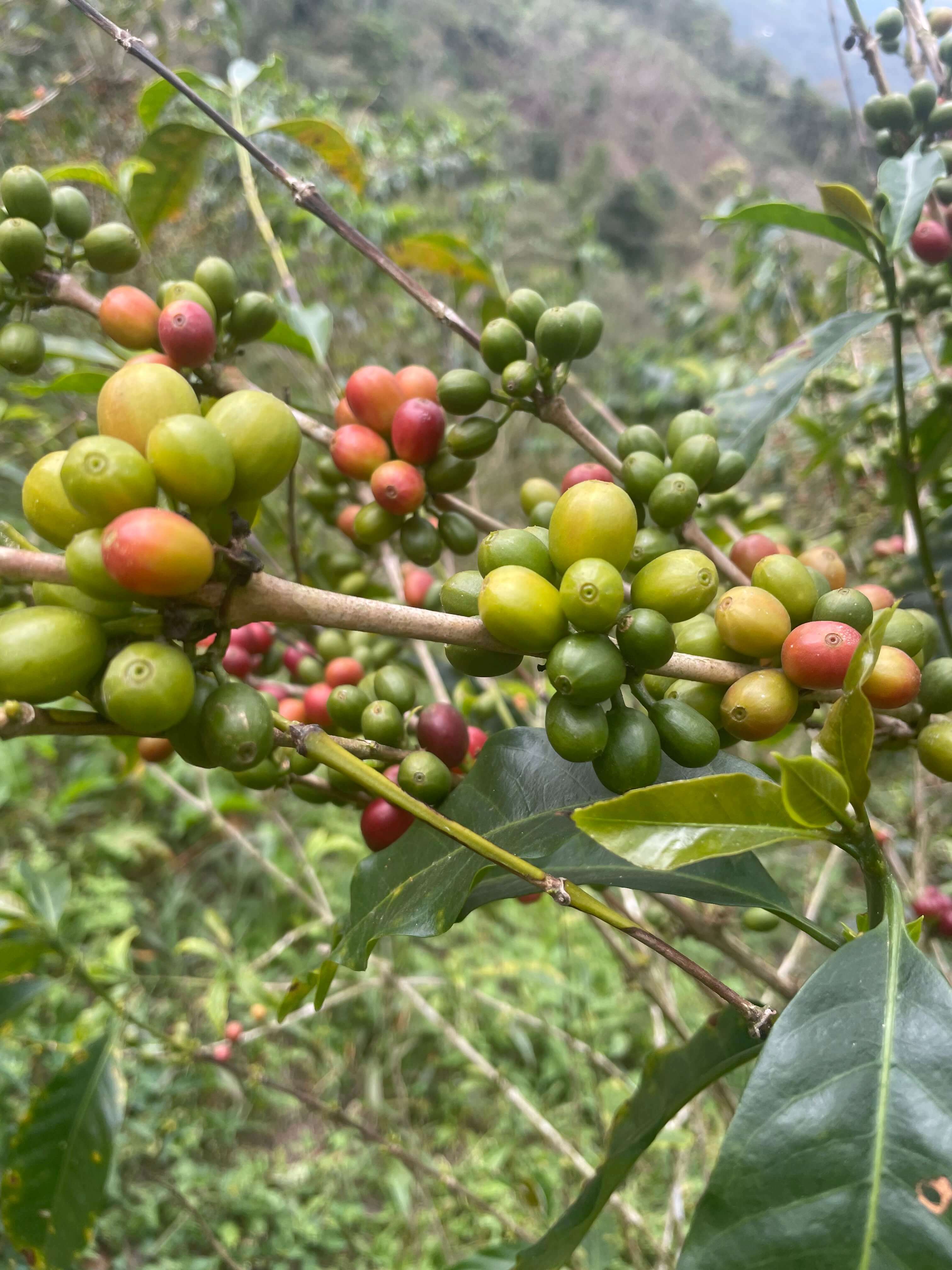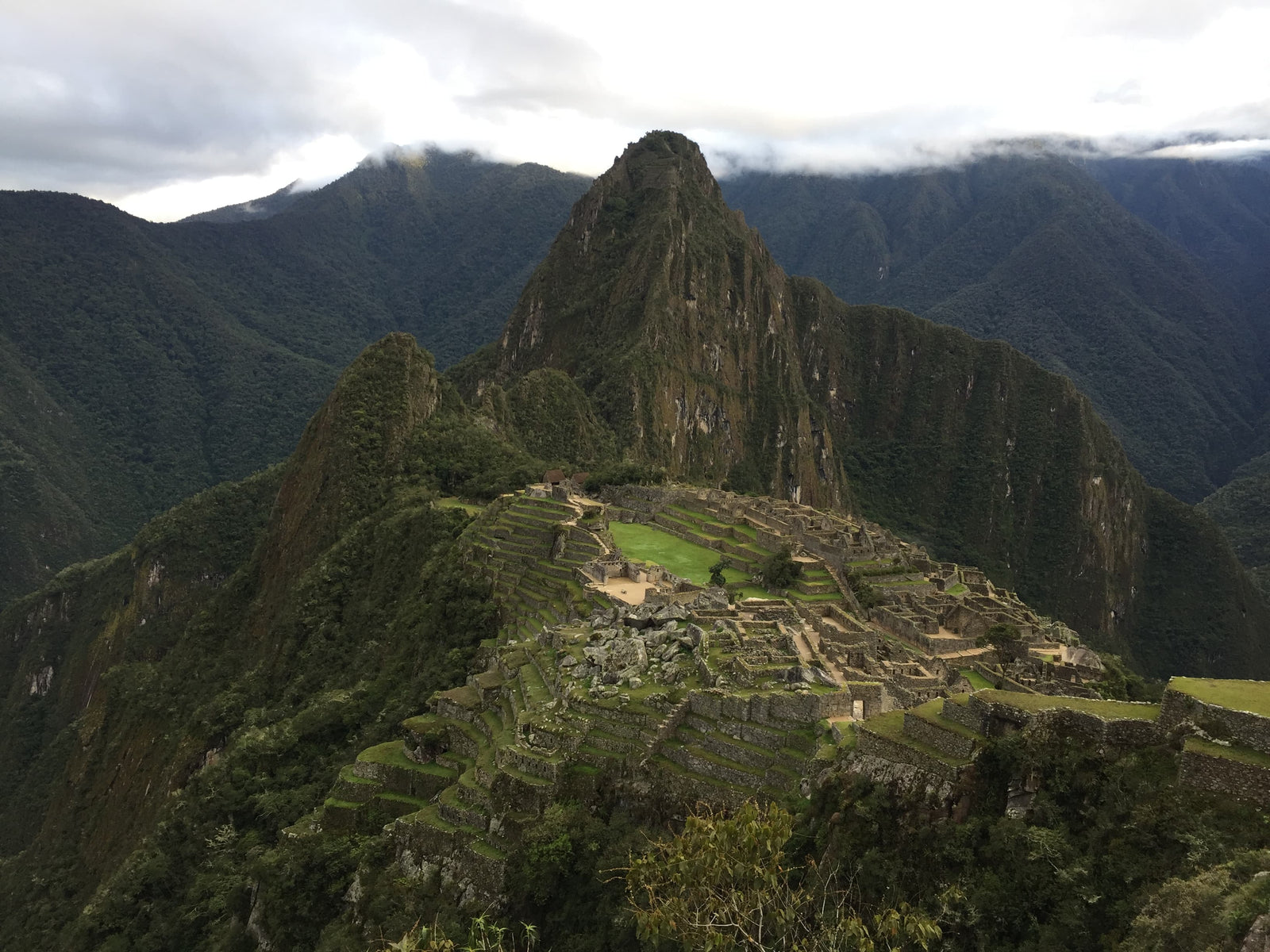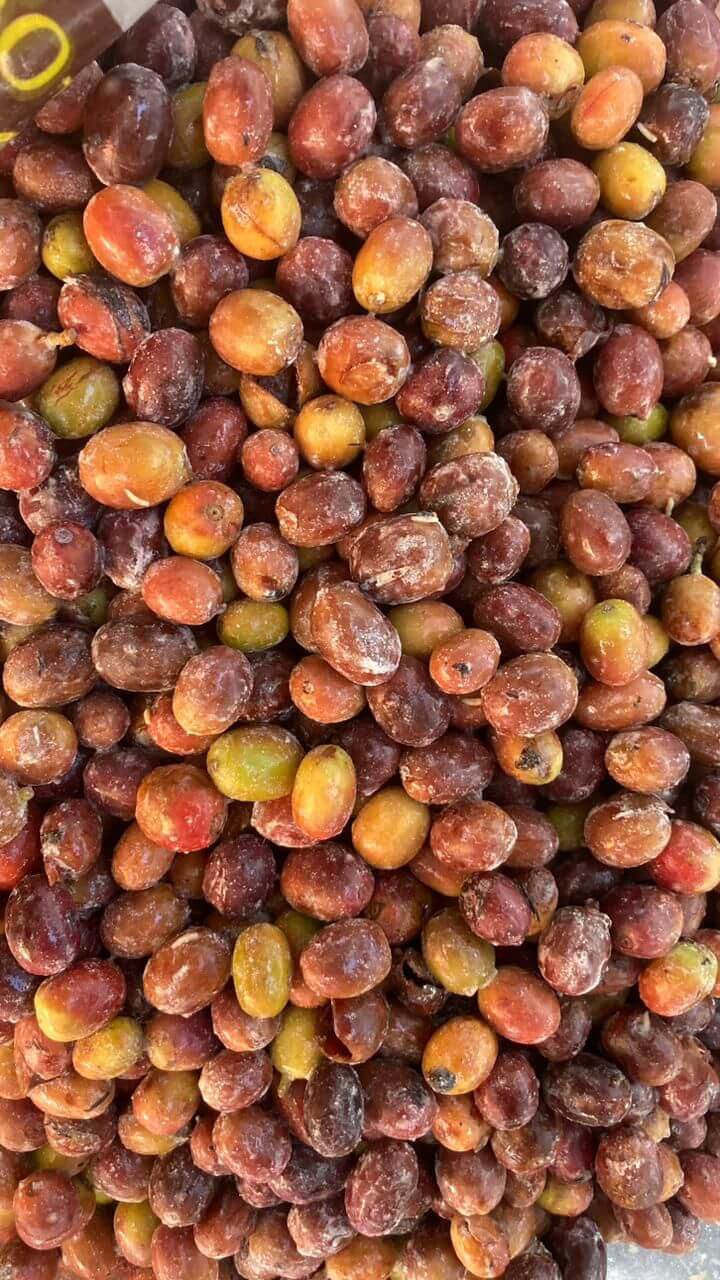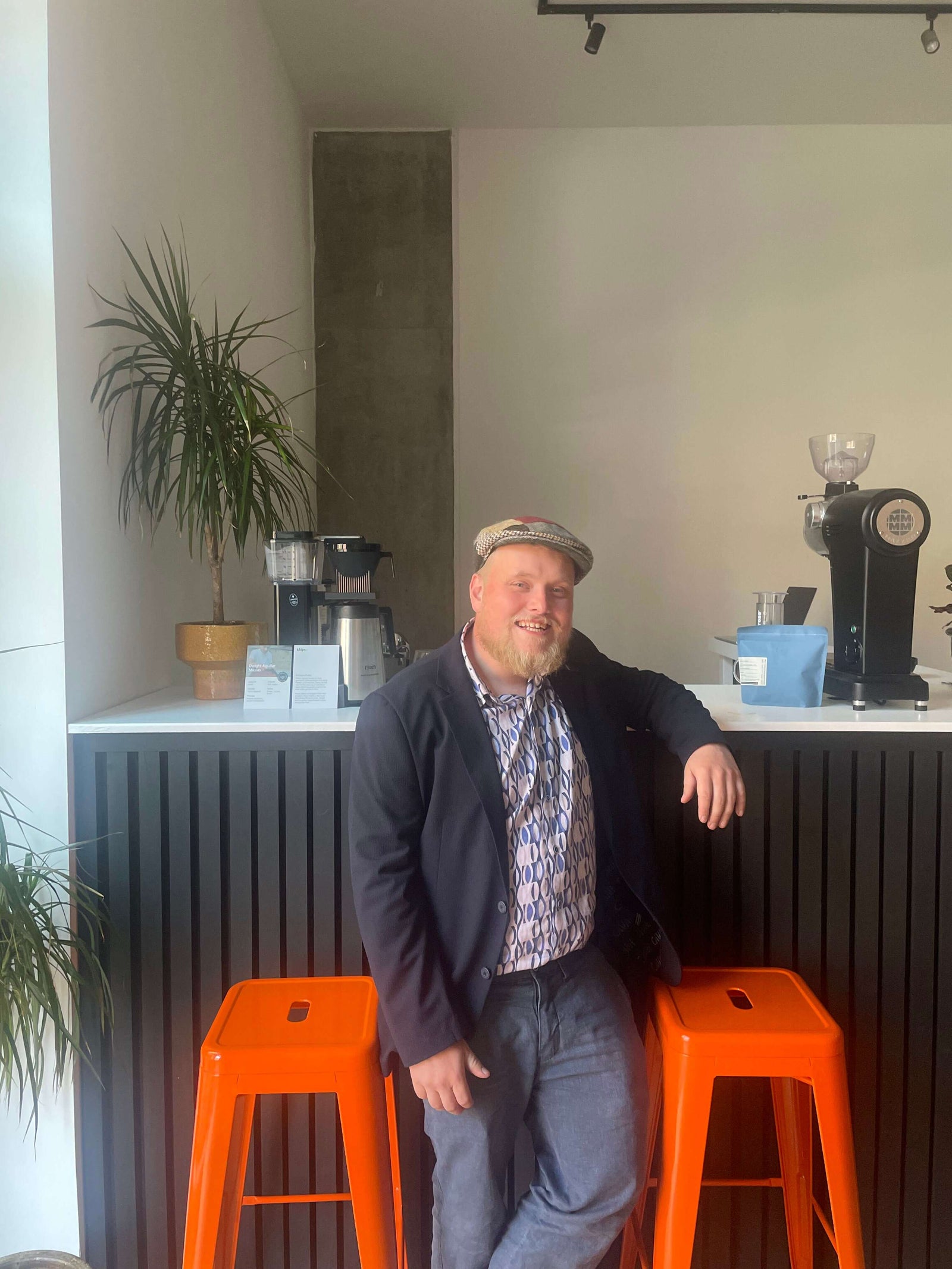About Specialty Peruvian Coffee
Peru is well placed to grow coffee. It sits right in the middle of the coffee belt, this is part of the world in the tropics where coffee is grown. It has a rich diversity of culture and the climates range from the tropical areas in the east to the dry deserts in the west, with the Andes going from top to bottom.
A vast amount of people live in and around the Andes and depend on the climate to sustain themselves. Indigenous groups such as the Quechua and Aymara have lived in these areas for centuries and have deep knowledge and understanding of the climate and ecology.
One of the most unique parts of the Andes, and Peru in general that’s great for coffee growing is the sheer amount of microclimates.
What are microclimates?
Microclimates are localised climates that are different to the surrounding area, pockets of land nestled between two mountains for example will have a unique microclimate to the surrounding area. Coffee growing thrives on high altitude and fertile soil, microclimates provide this in abundance and this contributes to the unique flavour of Peruvian coffee.
With the Andes mountain range being so high up, this helps create a cool, sunny and dry climate ideal for coffee growing, the farms growing coffee can be quite hard to reach, usually 4-5 hours away from a major city or small town.

What does Peruvian coffee taste like?
This is one of key characteristics that give Peruvian coffee a unique flavour and aroma. Usually you’ll find Peruvian coffee to have a chocolate, nutty, and berry taste, however, depending on what region your coffee comes from, that can make a big difference to the taste.
Peruvian coffee flavour profiles are not one dimensional, they have a dynamic flavour depending on the region, and there are 9 coffee growing regions throughout Peru, each with their own flavour wheel!
What is a coffee flavour wheel?
The coffee flavour wheel is a tool that helps to describe the different flavors that can be found in coffee. The wheel is divided into four main categories: sweet, sour, bitter, and salty. It then breaks down those categories into more specific flavors.
Why are microclimates good for the coffee flavour?
First and foremost, this dynamism is attributed to the microclimate of where the coffee grows. Each region has a different landscape and topography, it could be high up in the Andes or it could be deep in the jungle.
With each differing microclimate comes a different level of biodiversity. Different plant species that thrive in different areas bring about a whole new ecosystem within them, from the insects that feed on those plants to the animals that roam around and fertilise the soil, all this contributes to the flavour of the coffee.
The best Peruvain coffee is so difficult to choose because of the microclimates in which they grow and of course, taste is subjective, however, when we’re choosing our coffees, we’re looking at all these factors to make sure we can bring something unique to the table.
Is biodiversity good for coffee?
Biodiversity is good for coffee because it helps to protect the coffee cherries from disease. The ecosystems that are high in biodiversity attract a variety of different habitats which all benefit one another and in turn increase the resilience of the ecosystem. For coffee plants growing in this ecosystem, it’s a benefactor of it’s environment and that shines through in the flavour of the coffee.
Not only is biodiversity good for coffee flavour but it’s also really good for the environment. The Peruvian coffee farmers are stewards of the land, they rely on what they like to call Pachamama (mother nature) for their food and their livelihood. They treat their farms with the utmost respect and protect the biodiversity at all costs because without this they are really struggling.

What impact can buying Peruvian coffee have?
When purchasing speciality coffee from Peru you know that you’re giving back to a community and supporting a number of committed people who are nurturing nature for the better. The money spent on coffee here in the UK contributes to a better standard of living for them because it’s worth 5 times as much. And it’s not just the farmers who benefit from the increased income but the whole supply chain.
What this does for the Peruvian specialty coffee economy is increase the investment in better growing, harvesting and processing techniques. This extra income is compounded by the number of people in the supply chains all investing back in their own enterprises, whether that be on the farm through technologies that increase the quality and yield or the co-operatives buying heavy duty machinery to increase their productivity and ability to scale.
Where it started and where it is today
Peruvian farmers have been growing coffee for centuries, their first crops go back as far as the mid 1700s. It’s come a long way over the last 20 years, farmers have got themselves organised forming farmer co-operatives and all pulling together to improve crop quality that is ready and eligible to export, with full certifications such as fair trade, rainforest alliance and organic.
In the last 5 years there has definitely been an improvement on the speciality end of coffee. Roasters across the country are pushing boundaries working with farmers, educating them on how they can improve the crop, while baristas are experimenting with new ways of making coffee.
Peruvian coffee is one of the best kept secrets in the coffee industry for sure, and if you didn’t visit or know about Peruvian coffee then you wouldn’t be aware that there is a coffee boom happening right now across the country.
It’s not been without its challenges. Obviously competition from other countries more established and with better brands of coffee have been tough to compete with but more importantly the changing climates has increased the number of pests and diseases that are killing the coffee crops.
What is coffee rust?
Coffee rust is one of these diseases which has really crippled coffee farmers in the last 10 years. It’s a type of fungus that attacks the leaves of the coffee plants. It can seriously damage the plant and reduce the amount of coffee that is produced.
The impact that this has had on the coffee industry in Peru has been significant. The fungus has caused a decrease in coffee production, leaving farmers with less coffee to sell which has in turn left many of them without a livelihood.

How to avoid coffee rust?
There are several ways to avoid coffee rust. The higher the altitude the drier the climate so this is one way to avoid coffee rust as the fungus thrives in moisture. There are also options of using crop rotation to help break the life cycle of the coffee rust fungus and growing coffee in the shade so that organic pesticides can take effect.
One of the ways Cesar Marin, a
biodynamic coffee farmer in Peru has avoided coffee rust thus far is by choosing to grow a specific type of variety called Obata. This coffee cherry is resistant to certain fungus and is proving a rewarding endeavor.
Back to the coffee farmers
There are 100,000’s of coffee farmers in Peru and the whole supply chain of people involved is well over 1m people. This is a huge crop for the people of Peru, many of those are living high in rural lands and are small holder farmers. The small holder farmers often have a few hectares of land and they produce coffee for themselves, co-operatives they are part of or deliver them to washing stations.What’s a coffee washing station?
Coffee washing stations are facilities created and managed by large co-operatives and/or coffee importers who offer a place where small holder farmers can drop off their coffee and have the beans cleaned and sorted. This is where the small holder farmers can receive payment for their coffee by weight. It’s at this point where the washing station sorts the coffee by size, colour and inspects any for defects.

The role of a coffee co-operative in Peru
Coffee farmer co-operatives are a key part of the coffee industry in Peru. They help coffee farmers with educating them on improving crop yield, quality, how to attain specific certifications and of course, marketing their coffee.
They pool resources together and all share a mission of improving Peruvian coffee. Co-operatives are very important in a business context for the coffee farmers because they safeguard the price of Peruvian coffee to a degree.
When looking to sell the coffee to international buyers they will make sure to not sell below certain prices which in effect controls the price above a certain level, great for the farmers.
In terms of coffee production, small scale farmers can benefit from sharing drying mills, these facilities are often located near the coffee farms themselves and are used to dry the beans using a variety of methods.
Drying the beans quickly and efficiently helps improve the quality of the coffee beans and speeds up the process from the coffee on the farm to the cup.
Fairtrade and Organic Coffee in Peru
Many consumers of coffee around the world are wanting to make sure their coffee is Fairtrade and in Peru the large scale coffee buyers are making sure that the farmers are being paid a fair price, with safe working conditions and using sustainable farming practices.
Fairtrade is at least the minimum acceptable standard in this day and age and to export, it has to be Fairtrade certified, but in Peru many farmers are striving for organic coffee.
This is an additional certification which commands a higher price for the buyers and consumers and also a higher wage for the coffee farmers who can achieve it. In order to be able to grow organic coffee it requires a shift in the end-to-end process of cultivating the coffee beans, this is not something that happens overnight, it can take on average 3 years to do.
Coffee farmers in Peru who are doing this are patient and planning for the longer term. There are certain initiatives in Peru that are incentivising farmers to switch to organic coffee farming because of its benefit to the land, increased cup quality and higher premiums.
What are the differences between conventional coffee to organic coffee?
The main differences are in the way the coffee is produced. Organic coffee is grown using no synthetic fertilisers or chemicals which would act as a way to control pests, weeds, fungus and insects.
The use of pesticides, herbicides, fungicides and insecticides in synthetic fertiliser can be bad for the environment and the land because it finds its way into the soil and starts to compromise the soil quality as well as water and the air.
In Peru there are many reasons why synthetic fertilisers are still a good choice for many farmers to use so it’s not a case of organic good and conventional bad, however, for the farmers who really want to push the boundaries with their coffee quality and flavour, organic is the way to go.
Peru is gradually becoming one of the leading countries for organic coffee as a lot of the methods are known to the indigineuos populations already.What is the process for a farmer in Peru to become certified organic for coffee?
For a farmer to become organic certified in Peru it must be recognised by the organic certification body and then implement a series of organic farming practices. This is where the farmer co-operatives can come into their own by offering technical assistance and know how to achieve this.
The farmers have to have maintained these practices for a minimum of three years so it’s a big commitment and they get inspected regularly to make sure they are meeting the requirements.
What are popular organic coffee farming practices in Peru?
A few of the organic coffee growing methods in Peru include;
1. Organic mulching & composting
Using natural materials such as leaves, grass clippings, food scraps and manure to cover the soil around the coffee plant to keep the plants healthy and hydrated.
2. Organic pesticides, herbicides and fertilisers
Using natural sources such as Neem oil to keep pests away, garlic oil and tea tree oil to kill certain weeds and manure, guano (bird poo!), and seaweed to provide protein, phosphorus and nitrogen needed to fertilise the coffee plant.
3. Organic traps
There are many parasites that can become a problem for the coffee plant so one way to overcome this is to create certain traps that attract the predator of those parasites, that way the coffee plant can be safe because the bugs like coffee berry borers can be controlled and not destroy the crop.
4. Organic crop rotation
Organic crop rotation is the process of rotating the coffee plants with other crops. This helps to maintain the health of the soil and reduce the risks of pests and diseases. Monocrop (one crop) farms experience problems with this because the pests and parasites become familiar with the ecosystem and then adapt to the environment, almost becoming predictable.
The crop rotation disrupts the flow of the ecosystem and creates problems for these pests, disorientating them and their ability to spread diseases, keeping the farmer one step ahead in safeguarding their coffee crop.
What are the benefits of using organic farming methods?
All of the methods used in organic coffee farming are biodegradable and non toxic to humans and animals, all the natural materials are recycled back into the ground and help contribute to soil health which in turn increases crop health. The soil health is paramount for the sustainability of the coffee farmer and making sure it’s nutrient rich will go a long way in keeping the coffee cherries healthy and full of flavour.The road ahead for Peruvian Coffee farmers
The transition from industrial and conventional coffee farming to organic is not going to be an easy one. The support and training required is a collective effort of farmers and co-operatives, both have to make sacrifices and take risks in order to achieve this.
For example, for the first 3 years the coffee farmers are not able to sell their crops on the organic coffee market so they need financing from co-operatives in order to see the transition through.
That being said, the transition has been successful for 10,000’s of coffee farmers in Peru and in the last 10 years the production has increased. With the support of the global coffee market and appreciation for higher quality coffee this trend is likely to increase.

That’s it for our introduction to Peruvian coffee.
Are you ready to try some?
Image Credits
The images in this blog were taken by Juan Carlos Portales when he visited Chacra D'Dago in May 2021. We commissioned Juanca to interview a number of people involved in the coffee industry in Peru. The above is a collection of images from Lima and Villa Rica. You can view the interviews on our Instagram.






